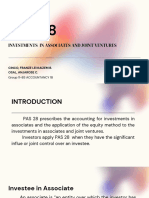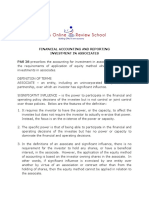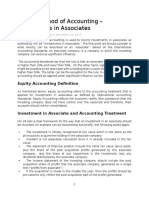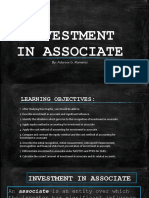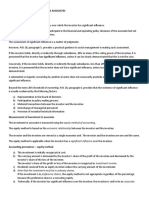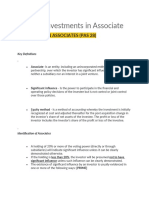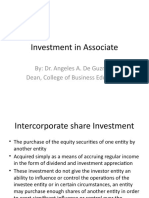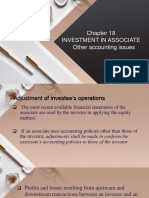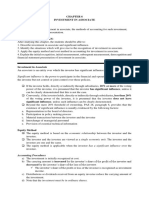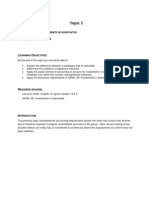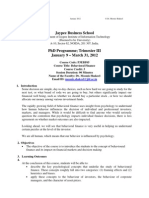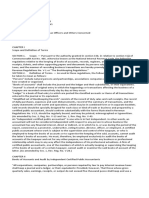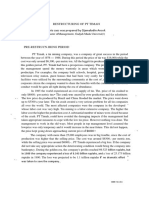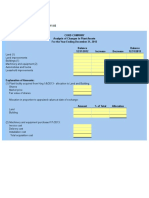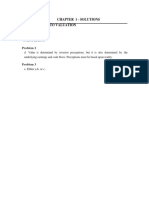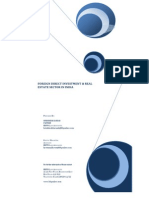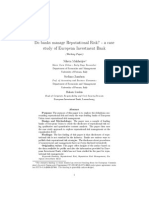0% found this document useful (0 votes)
251 views7 pagesEquity Method of Accounting For Investment in Associate
The document discusses the equity method of accounting for investments in associates. An associate is an entity where the investor holds 20-50% voting power. For investments between 20-50%, the equity method is used. Under this method: (1) The investment is initially recorded at cost; (2) The carrying amount is later adjusted to reflect the investor's share of the associate's profit or loss; (3) Dividends received reduce the carrying amount. An example shows an investor recording the initial investment, a reduction for dividends, and an increase for its share of the associate's net income.
Uploaded by
dorpianabsaCopyright
© © All Rights Reserved
We take content rights seriously. If you suspect this is your content, claim it here.
Available Formats
Download as PDF, TXT or read online on Scribd
0% found this document useful (0 votes)
251 views7 pagesEquity Method of Accounting For Investment in Associate
The document discusses the equity method of accounting for investments in associates. An associate is an entity where the investor holds 20-50% voting power. For investments between 20-50%, the equity method is used. Under this method: (1) The investment is initially recorded at cost; (2) The carrying amount is later adjusted to reflect the investor's share of the associate's profit or loss; (3) Dividends received reduce the carrying amount. An example shows an investor recording the initial investment, a reduction for dividends, and an increase for its share of the associate's net income.
Uploaded by
dorpianabsaCopyright
© © All Rights Reserved
We take content rights seriously. If you suspect this is your content, claim it here.
Available Formats
Download as PDF, TXT or read online on Scribd
/ 7


